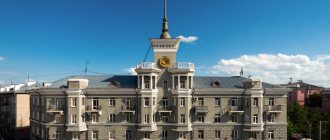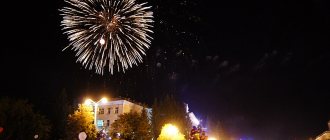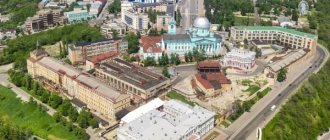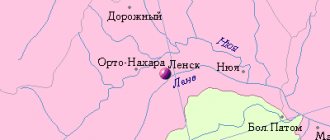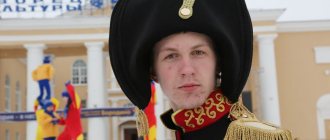From Porechye to Demidov
Today Keytown invites you, dear readers, to go to the Historical City, the Homeland of Yuri Nikulin, the cucumber capital of the Smolensk region - the city of Demidov.
Demidov will celebrate his birthday on September 19, 2015. This year the city will mark 516 years since its first mention. The population of the Demidovsky district is 12,310 people (01/01/2015).
Base
Porechye (this is what the settlement was called from the moment of its foundation until 1918) was first mentioned in 1499; the village was located on the banks of the Kaspli River at the confluence of the Gobza River.
Name
The name of the city of Porechye is explained by its location along the bank of the Kasplya River. And the city received the name Demidov in connection with the events of November 1918, when the secretary of the district committee of the RCP (b) Ya.E. Demidov died. In memory of him, the district executive committee of the Soviets made a decision on November 19, 1918 to rename Porechye to the city of Demidov, and Porechsky district to Demidovsky.
Story
Poreche as a settlement is found in written sources from the 15th century.
In 1499 it was occupied by the Russians, but according to the truce it went to Lithuania, from 1514 to 1611 it belonged to the Moscow state.
In 1609, Porechye was already a fairly large settlement, the center of the camp. After the liberation of the lands of the former Smolensk principality as a result of the war with the Polish-Lithuanian Commonwealth (1654-67), Porechie became the center of the palace parish, it had 97 households with a quitrent of 271 rubles.
Taking into account the more advantageous position of Porechye, Peter I in 1723 issued a Decree on moving the pier from the village of Kasplya to the village of Porechye, from which time it became an important trading point in Russia. From here, goods travel by water to Riga and further to Western European countries. All trade operations in Porechye were carried out primarily by merchants from the city of Roslavl and often from the city of Smolensk. Trade land routes went to Porech from the city of Roslavl through Smolensk, from Dukhovshchina, from Kaluga through Yelnya and Smolensk. Goods were transported along these main routes.
In 1776, by Decree of Empress Catherine II, the palace village of Porechye was given the status of a city and a district center. By 1780, a shopping center had developed on the spit, where shops and warehouses were located. At the end of the 18th century. stone buildings of public places, warehouses of the Porech pier were built, and merchant houses nearby.
In 1804, 2,798 people lived in the city, incl. 290 merchants. In 1812, Porechye was burned, out of 324 buildings, 217 were destroyed. In 1817, a plan for the restoration of the city was approved.
Porechye for a long time retained the importance of a major transshipment point on the trade route to Riga, but with the opening of the Rigo-Oryol railway in 1868 and due to the shallowing of the Kaspli River, this importance fell sharply; industry also did not receive incentives for its development: there were only small brick factories and pot production for local needs.
Soviet power in the district was proclaimed on January 21, 1918, and 2 months later a city council was organized in Porechye. During the counter-revolutionary attack on the city on November 13, 1918, the first chairman of the party committee, Demidov, and his associates Mareev, Bogdanov, Nakhaev and others were killed.
In July 1941, there were fierce battles for the city, and on July 16 it was abandoned by Soviet troops. Liberated on September 21, 1943. Seven formations and units of the Red Army were given the name “Demidovsky”. The city suffered great damage, 80% of the buildings were destroyed or burned.
Restoration required significant labor and funds. The new city construction plan, approved in 1965 with an estimated implementation period of 25-30 years, took into account mainly its historically developed planning structure, which is a monument of urban planning.
Attractions
- Pristansky warehouses,
- House of merchant Nikita Minchenkov,
- House of the merchant manager
- A home for the elderly and the poor, built with money from the merchant N. Minchenkov himself,
- House of merchant Vishkarev,
- House of merchant Zhilkin,
- The hospital building where A.D. Blank, V.I. Lenin’s grandfather, worked in 1824,
- Monument to Yuri Nikulin, opened in October 2011,
- The main attraction of the Demidovsky district, without a doubt, can be called the Smolensk Poozerie National Natural Park.
Symbolism
In 1780, the city of Porechye was granted a coat of arms. The symbolism of the city coat of arms - a silver river on a golden field - reflected the importance of the Kaspli River for the city.
The modern coat of arms of Demidov is based on the coat of arms of 1780.
People
- Elizaveta Nikolaevna Vodovozova (née Tsevlovskaya, August 5 (17), 1844, Porechye, Smolensk province - March 23, 1923, Petrograd) - Russian children's writer, teacher, memoirist.
- Yuri Vladimirovich Nikulin (December 18, 1921, Demidov - August 21, 1997, Moscow) - an outstanding Soviet and Russian actor, circus performer (clown), TV presenter.
- Alexander Ustinovich Kovalev (08/11/1923, Smolensk region - 11/17/1990) - head of the radio station of the 385th Guards Heavy Self-Propelled Artillery Regiment, guard foreman - at the time of nomination for awarding the Order of Glory, 1st degree.
Church of the Intercession
Walk along Demidov
You should start your walk around Demidov with a visit to the Spiritual Church
(XIX century). In the 20th century, its buildings were partially destroyed; restoration was carried out in 1995.
After the Spiritual Church, you need to go out to Kommunisticheskaya Street and visit the house-estate of Yuri Nikulin
. A famous actor and clown was born in this house. The historical house collapsed, and in its place they built exactly the same one, but from stone. On the ground floor there is a historical exhibition dedicated to Nikulin and his family, and on the second floor there are guest rooms.
From the house-museum it is a stone's throw to the monument to Yuri Nikulin
. It was installed in the city in 2011 and immediately became a real attraction.
A few tens of meters from the monument is the Demidov Museum of History and Local Lore.
. There are three permanent exhibitions and an exhibition of paintings by local artists.
You should complete your walk around Demidov with a visit to the monument to V.I. Lenin
. The monument was erected in 1925 and has the status of a historical monument.
Sights on the way to Demidov
The main attractions on the way to Demidov are in the city of Yartsevo, for example, the tower of the Khludovskaya manufactory
. The height of the tower is 30 meters, there is a large clock that strikes every hour.
Not far from the tower is the Peter and Paul Church
. This temple was built in the first half of the 20th century, closed after the October Revolution, and in 1990 it was returned to the Russian Orthodox Church.
Next to the Peter and Paul Church there is the Yartsevo Museum of History and Local Lore.
. There are four permanent exhibitions dedicated to the life of the 19th century, local fauna, and an exhibition of paintings by local painters.
Another attraction of Yartsevo is the monument to V.I. Lenin
. This monument was cast in the first days after Lenin’s death - in 1924, at the expense of the workers.
20 km from Demidov, in the village of Anosniki, there is the only Birch Bark Museum
. It contains a variety of products - from mushroom baskets to paintings made by professional artists. In the museum you can not only purchase your favorite works, but also take a master class on making products from birch bark.
7 km from Demidov, in the village of Boroviki, there is the vernissage “Alone with a Tree”
. Various wood and flower products are displayed here, there are even chairs made from flowers. A small wooden chapel was erected on the territory of the vernissage.
The Smolensk Poozerie National Park is located 5 km from Demidov
. After visiting this park, you can take either a walking or bus excursion; there is also the opportunity to swim along the river and look at the animals that live in the park from the water.
Next to the “Smolensk Priozerie”, in the village of Przhevalskoye, there is a museum-estate of the traveler and scientist N.M. Przhevalsky
. It contains the traveler's personal belongings and documents related to his life. About four thousand tourists visit the estate museum every year.
The Holy Spring is located nearby
with clean water.
3 km from Demidov, in the village of Zhelyuhovo there is another Holy Spring
.
1.5 km from the Holy Spring you should visit the Museum of Partisan Glory
. During the Great Patriotic War, there was a large partisan movement in the Smolensk region. The museum contains historical documents and personal belongings of Soviet partisans.
On the outskirts of Demidov in 2006, military fortifications from the Great Patriotic War
. They were here from 1942 to 1943. They include a real dugout, a machine gun nest and trenches dug as they were done during the war.

